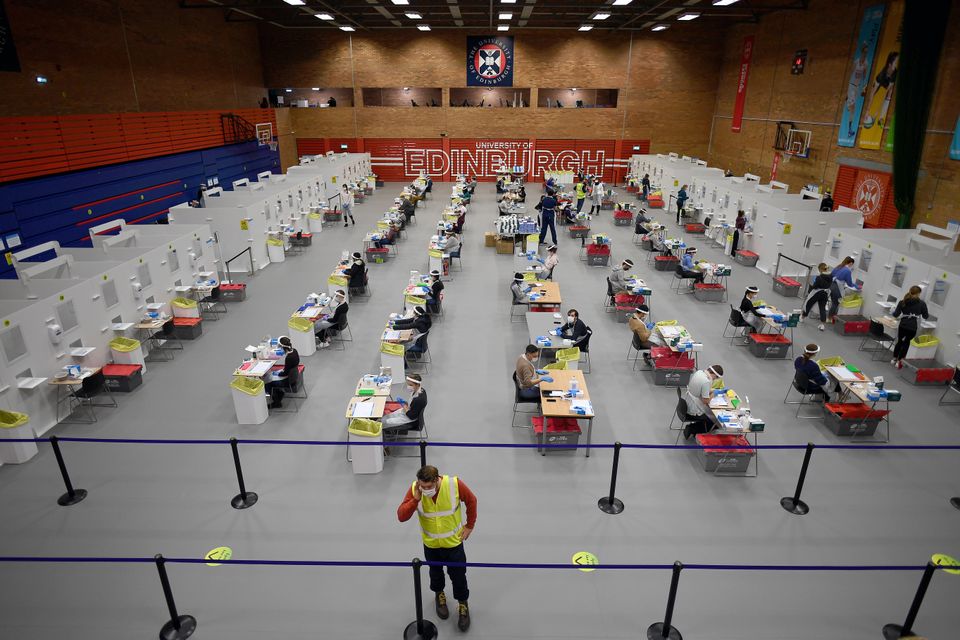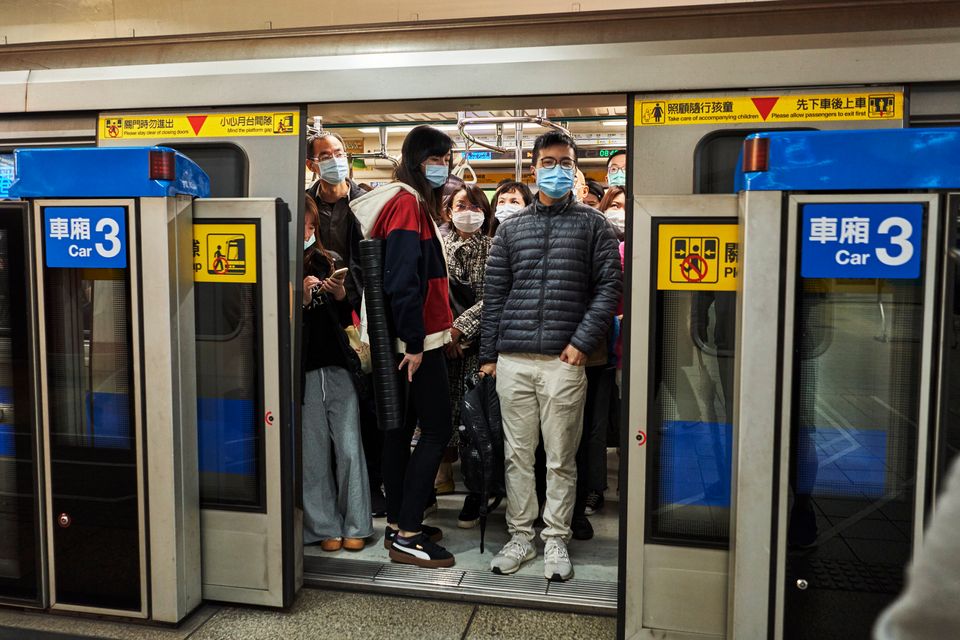On Wednesday the UK became the first country in the world to have a “clinically authorised” vaccine against coronavirus.
Roll-out of the Pfizer/BioNTech Covid-19 vaccine is due to start next week, with five million people expected to receive the jab by the end of the year.
But when will the world start to look different as a result? What will we notice first about the life-changing rollout of a vaccine again a disease that has itself changed our lives over the last nine months?
Here’s what the next couple of months could look like.
1. Actual vaccinations
An obvious point, but worth stating: some people will actually be invited to receive the vaccine, greatly reducing their risk of developing Covid-19.
The elderly, and those who live or work in care homes, will be among the first in line to receive the jab as early as next week.
“It will be at least a month before we start seeing the benefit from the first people to be vaccinated,” says Dr Kate Harrison, an immunology lecturer at the University of Chester.
“Everyone will need to be given two doses at three weeks apart and protection doesn’t start to rise for a week after the second dose.” In other words, by mid-January, people in our families could start to become immune, or at least protected (since the vaccine doesn’t have 100% efficacy).
She believes it could take “a significant period” for normality to return.
The rollout of the vaccine will be a huge logistical undertaking and it could take several months to get those priority groups fully vaccinated. “There’s no way we’re going to achieve that before spring,” says Professor Linda Bauld, a public health expert at the University of Edinburgh.
“I think the key groups that need to be vaccinated will have been by March or April – not just from the Pfizer vaccine but hopefully other vaccines as they get regulatory approval.”
“Some of these older and vulnerable people will be living in relatively remote villages and rural locations,” says Professor Sally Cutler, a medical microbiology lecturer at the University of East London. “It’s going to take a while to actually get the vaccination out to all of those individuals.”

2. Seeing family and friends
“Once the people in the first priority groups have been vaccinated, then we can start thinking about what restrictions can be eased,” says Professor Rowland Kao, an epidemiologist also from the University of Edinburgh.
Small-scale restrictions such as family-level interactions could be the first to be lifted while making sure transmission rates stay low.
The Pfizer vaccine has been shown in studies to be 95% effective and, while its efficacy is significantly higher than the flu vaccine, it means 5% of people who are vaccinated could still get Covid-19.
A 95% efficacy is about as good as a vaccine can get; the Moderna and Oxford vaccines have also been shown to have high efficacy rates in trials.
Having said that, that remaining 5% means vaccinated care home residents shouldn’t be licking door handles or taking unnecessary risks.
“It’s not going to work for everyone in just the same way the flu jab doesn’t work for everyone,” says Bauld. “That’s why we need to continue to be cautious and follow appropriate behaviour.
“So if you’re over the age of 75 and you’ve been vaccinated but not everybody else has, then you should carry on physically distancing and wearing a face covering.”
3. More indoor venues could open up
Once the most vulnerable people have been vaccinated, it might make sense to bring more areas into lower tiers to reflect the reduced risk.
“People would still need to be wearing masks and maintain social distancing, but pubs and restaurants could maybe open a bit later,” says Kao.

“Places like restaurants and gyms being able to open even when there are slightly higher levels of infections, and in general accepting slightly higher infection levels in the population before triggering higher tier levels.”
Back in July, the reopening of pubs and restaurants and easing of restrictions did not appear to have a huge impact on the rise of infections in England. “It’s only when they started allowing more gatherings in groups that the infection rate began to really rise,” says Kao.
4. Larger (but not large) groups could meet outdoors
“The small changes we are more likely to see will be along the lines of smaller groups of people being allowed to meet outdoors,” says Kao. “People could meet in larger groups than now – but not in huge groups.”
That’s because the Pfizer vaccine has not yet been shown to prevent transmission. (On the other hand, researchers behind the Oxford/AstraZeneca vaccine have said they have seen signs of reduced transmission, as they tested participants in the trial for asymptomatic infection.)
“Initially vaccination is unlikely to have an impact on community infections,” Kao continued. “It’s really good news that people are being protected from getting symptoms or testing positive, but it doesn’t tell you whether or not these individuals are also prevented from being infectious and giving the virus to others.
“What might be happening is that people are not developing symptoms but some may be mildly infected.
“This is still a very good thing but does mean that the numbers of new infections may decline more slowly than if vaccinated people were not infected at all. It doesn’t guarantee that transmission might not go on for quite a long time even after a vaccine is deployed.”
That’s one reason mass testing will still be so important. Read more here about why testing is the new normal.

5. Mass testing needs to continue – and improve
As the NHS takes on the huge logistical undertaking of vaccinating millions of people, widespread testing is needed for experts to understand coronavirus better in order to tackle it.
“We’re learning new information because of the continual screening of the population in order to look at viral circulation, so we really must keep doing that at this point in time so that we can build up that database,” says Cutler.
“Testing should be permanent on the list of things we need to carry on doing, so we can generate the data to understand the efficacy of the vaccines and the virus itself.”
The problem is, mass testing in the UK has been extremely flawed. “It needs to be faster and it needs to be able to convince people to comply with things like self-isolation,” says Kao.
As Cutler puts it, the model of an infectious disease such as Covid-19 is like an iceberg. “You only get the peak sticking up above the water, and that’s just symptomatic individuals. The problem with earlier testing was that you could only get a test if you were symptomatic.
“The bulk of people under the surface feel fine and didn’t get tested, so a lot of people out there in the community carried on life as normal, potentially spreading infection with them. The way testing is being rolled out now and broadened to be more accessible is finally positive.”
6. Eventually, gatherings in large groups in- and outdoors
If the initial vaccine rollout goes smoothly and according to plan, Kao believes he would feel comfortable going to watch a play inside a theatre by Easter. “If people are doing things like wearing masks and trying to maintain some level of distancing, then I don’t see why not.
“If one would make a rough guesstimate, then Easter of 2021 for when we could return to something close to normal.”
Bauld is slightly more cautious. “I would be much more confident about the early summer. I’m pretty confident there will be people inside the stadium and in crowds to watch Scotland play at the UEFA Euro.” That’s on June 14.
Mass testing will also help with indoor and group gatherings. “It means people can get tested just before they attend indoor events,” says Bauld.

7. Reaching ‘herd immunity’… eventually
In order to reach herd immunity – where enough of the population becomes immune to the disease – Kao estimates the “bulk of the population” in the UK would need to receive the jab.
“Because the reproduction numbers of Covid-19 are so high, you’d probably have to vaccinate roughly 80% to 90% of the people.”
Dr Athar Aziz, a lecturer in biomedicine at the University of Salford, gives a similar number. “Having a vaccine is one thing. But to have normality in daily life about 75% to 90% of the population should be vaccinated.”
In the cases of the vaccines against smallpox and polio, “it can take time”. “Like for most infectious diseases, we need almost two years to control it,” he adds. “In other infections as well, like H1N5 [bird flu], viral infections are significantly reduced in about two years.”
In October, Taiwan celebrated 200 days without a single case of Covid-19. “They’ve basically eliminated the virus there,” says Bauld.
“People are going to sporting events and going to the cinema and to the theatre, but they’re wearing face coverings and washing their hands. So even if people start getting vaccinated in the UK, we still need to be doing that.”
One thing the vaccine will be unlikely to be able to do, however, is to eradicate Covid-19 entirely. “I don’t think it’s likely that we could ever achieve that,” says Kao.
“It’s really important to understand we’re not going to eliminate Covid-19,” agrees Bauld. “Even with mass vaccination this bug is going to be with us, it’s not going to go away.
“We’re going to have to live alongside this virus – but at least we will be mitigating the health effects of it.”
Harrison agrees. “The start of vaccinations doesn’t signal the sudden end of the pandemic, unfortunately. But it does make that light at the end of the tunnel that bit brighter.”